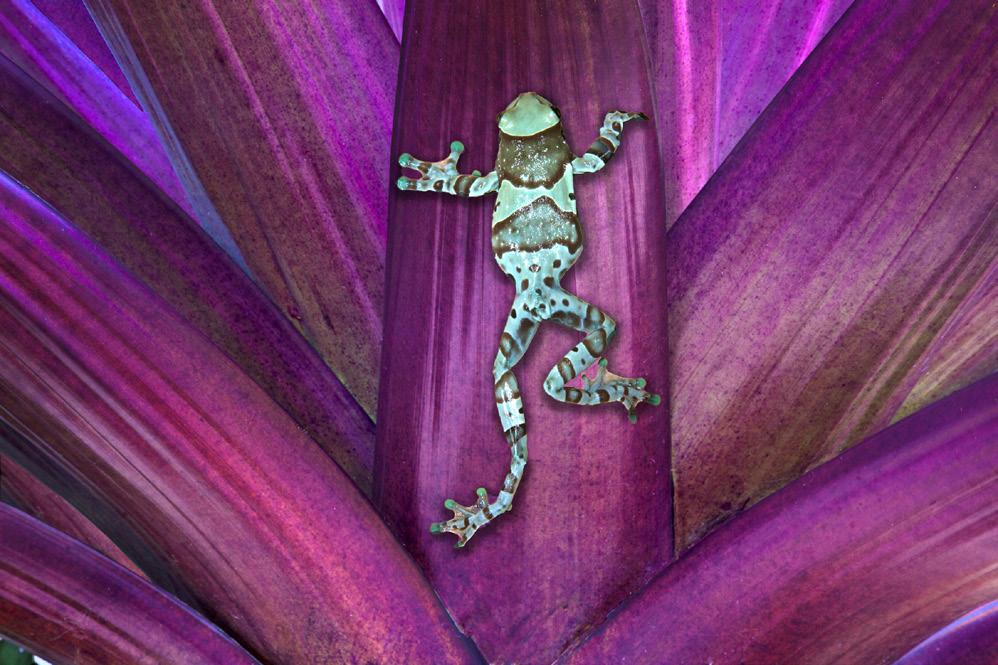
1 minute read
What’s wrong with this picture?
Most of the images I take during my frog and reptile workshop unmanipulated. In this instance, though, I composited the Amazon milk frog with the plant. I like very much the position of the frog’s legs, and the colors work well together. But there is one problem.
Everything casts a shadow, even the smallest of subjects like insects. Small frogs also cast shadows, and even though the shadows of small creatures are subtle, they exist. Therefore, when using Photoshop to composite a subject with a background, a shadow is usually necessary to make the combination of the images look real.
The picture on the next page shows the frog and its shadow, and now the subject doesn’t look like a cut out or like it doesn’t below there.
The easiest way to make a shadow like this is paste the frog onto the back-

groud with Edit > paste. This creates a layer. At the bottom of the layers palette, the fx icon will be active, and when you click on that a submenu shows itself. The last time in the list of choices is Drop shadow. When this is selected, a dialog box opens that allows you to create a shadow all around the subject. You can vary the distance, the size, and the spread of the shadow as well as the opacity of it with clearly marked sliders.
Alternatively, since the frog is on a layer, you can activate the background layer -- the plant -- and simply use the burn tool on about 25% opacity. The frog won’t be affected by the burn tool’s effect, so there is no need to be careful about darkening the edge of the frog.
Applying a drop shadow may take two or three attempts for it to look correct. Even after doing this many, many times, it takes me a few tries before I’m satisfied. §





